
Snakes Around Las Vegas, Wildlife Around Las Vegas
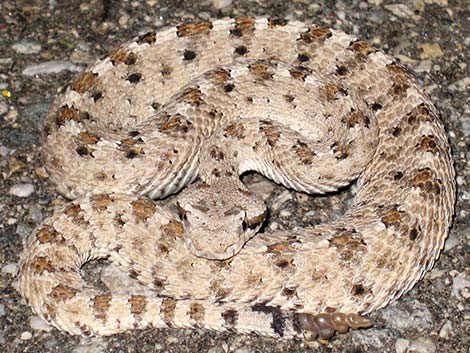 |
General: Mojave Desert Sidewinders (Crotalus cerastes cerastes) are small, but heavy-bodied snakes with broad, triangular-shaped heads and rattles on the tail. Sidewinders can be recognized by the "horns" above the eyes. The dorsal pattern is dark blotches on a sandy background, and the tail is light with black bands. These snakes are venomous. Do not attempt to handle rattlesnakes; rather, enjoy your good luck of finding one from a distance (minimum 3 feet away) and leave them alone. Family: Venomous Snakes (Viperidae). |
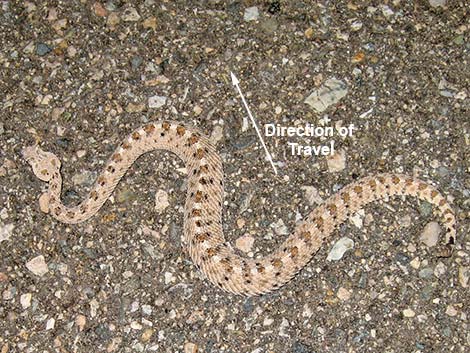 Moving sideways |
Technical Description: Size small, rarely exceeding 18 in. Head wide and triangular. Enlarged scales above the eyes look like horns. Tail with terminal rattle. The body color harmonizes with the color of the background and generally is light cream or tan with darker tan or brown irregular blotches on the dorsum. Diet: Small mammals and lizards. |
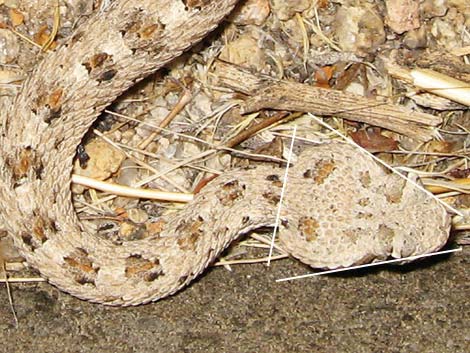 Rattlesnakes are most easily recognized by the triangular-shaped head and narrow neck |
Habitat: Low desert. Occurs in the Lower Sonoran (Creosote-Bursage Flats) and Upper Sonoran (Mojave Desert Scrub) life zones in sandy areas with vegetation and barren sand dunes below about 5,500 ft in elevation. Range: This species occurs in southeastern California, southern Nevada, southwestern Utah, western Arizona, and southward into northwestern Mexico. This subspecies occurs in Nevada and southeastern California, with small extensions into southwestern Utah and western Arizona. |
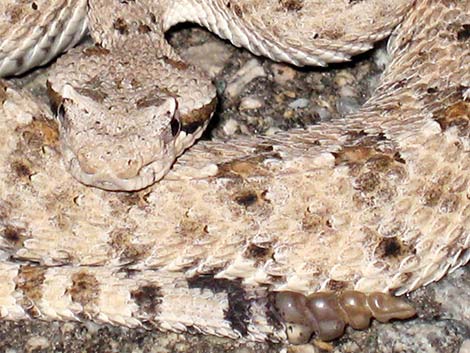 Notice enlarged scales (horns) above the eyes |
Breeding: Mate in the late spring. Similar Species: No other rattlesnake has horn-like projections above the eyes. Comments: The species sometimes moves in a sideways motion leaving J-shaped or S-shaped marks in soft sand. Although difficult to see, this species sometimes can be found coiled and partially buried in the sand. Special Remarks: Venomous. |
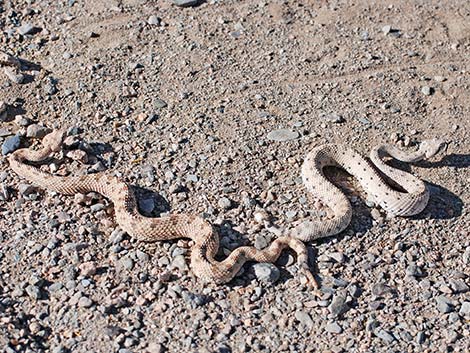 |
Sidewinders mating (more photos). |
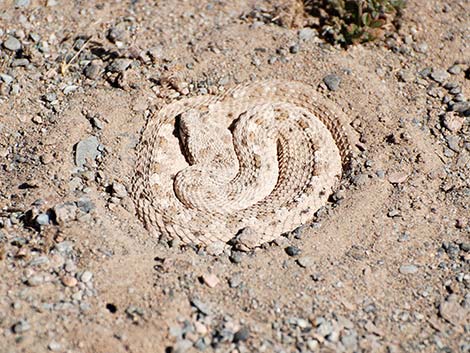 Sidewinders snuggle down into the sand and wait for dinner |
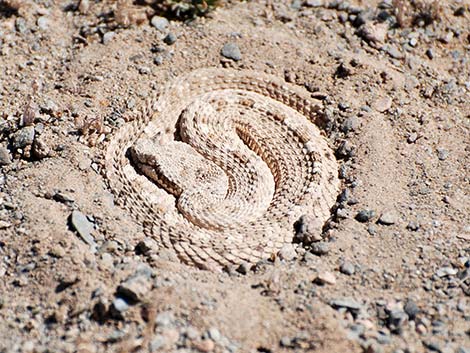 Sidewinders snuggle down into the sand and wait for dinner |
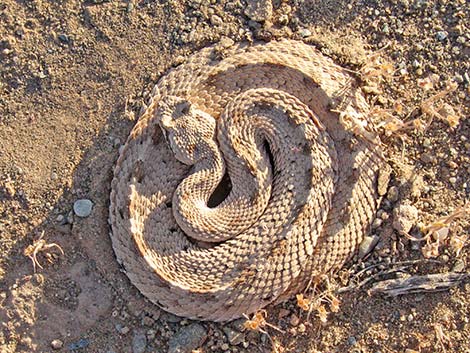 |
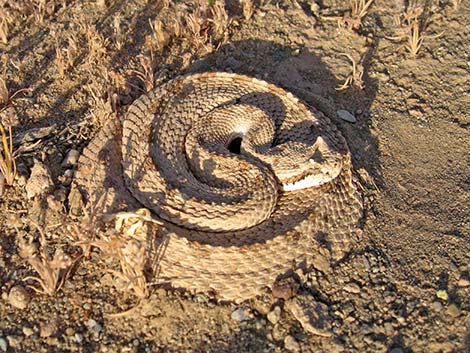 |
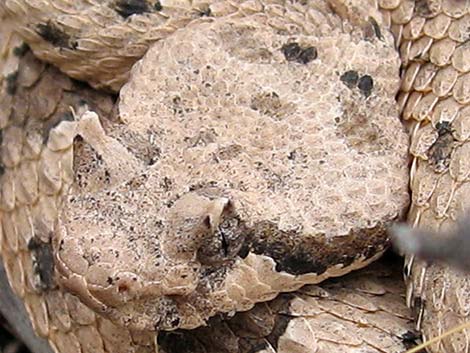 |
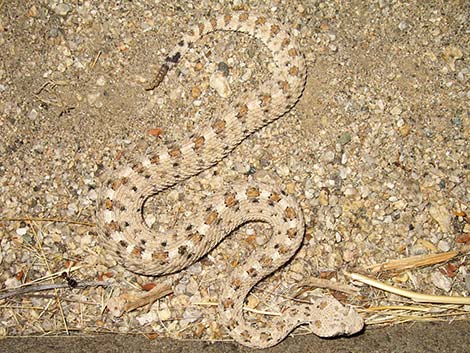 |
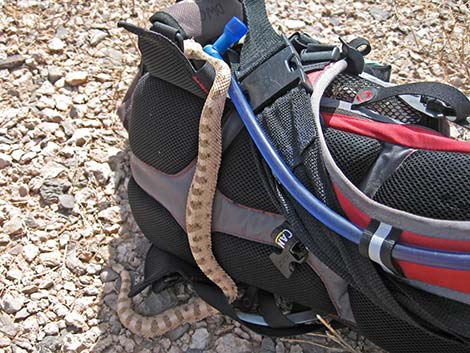 It is always a good idea to check your pack before you pick it up! |
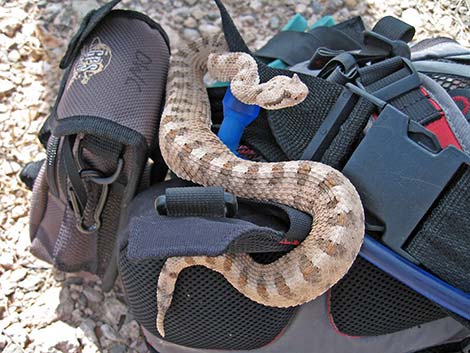 It is always a good idea to check your pack before you pick it up! |
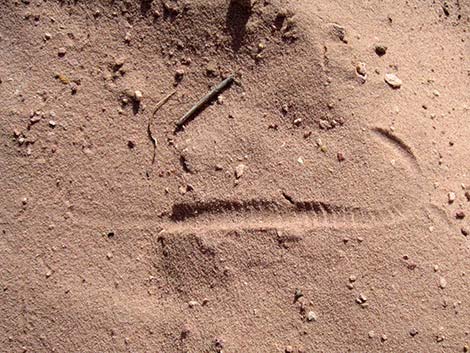 Tip of the "J" points in the direction of travel |
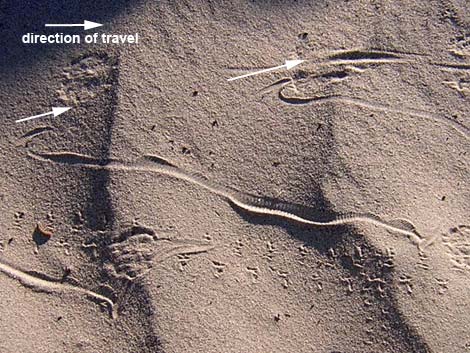 Tip of the "J" points in the direction of travel |
Note: All distances, elevations, and other facts are approximate.
![]() ; Last updated 221212
; Last updated 221212
| Snakes Around Las Vegas | Wildlife Around Las Vegas | Glossary | Copyright, Conditions, Disclaimer | Home |